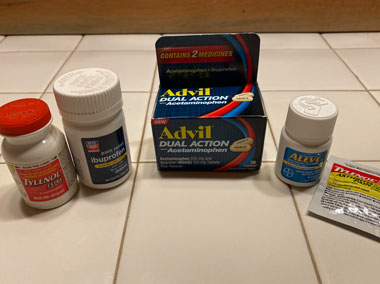Two weeks ago, I got my second COVID vaccination. Yaay!
My COVID vaccine experience was similar to my Hepatitis B vaccine series that I received 30 years ago. A series of 3 shots, spaced out over 6 months, my first Hepatitis B shot didn’t cause any discomfort. The second one that I received one month later was a different story. My left arm felt like someone had punched me HARD, even though I didn’t see any bruising.
My third and final Hepatitis B shot was even worse. Given six months after my first Hepatitis B vaccine, I could barely move my arm for the next week! Thank goodness that was the last one, because if there had been a fourth dose of vaccine needed, I doubt that I would’ve gone through with it.
My first COVID-19 vaccination felt much like my second Hepatitis B shot, giving me a sore arm for about a week. Then came my second and final dose of the Moderna COVID-19 vaccine, which will provide me with 94% immunity from COVID-19 within 2 weeks.
This time around, not only did my left arm ache but so did my shoulders and back. I woke up the morning after my vaccination with a headache, severe fatigue, and muscle aches at an 8 out of 10 on a pain scale.
First, I tried ibuprofen, two tablets of 200mg, but that only took my discomfort down to a 6 out of 10. Then, I remembered some recent studies showing how taking BOTH Tylenol® and Ibuprofen AT THE SAME TIME could relieve pain better than taking either one separately. In fact, the Pfizer company just introduced Advil Dual Action®, a combination tablet containing 125mg ibuprofen and 250mg acetaminophen.
Taking 2 tablets of 200mg ibuprofen PLUS 2 tablets of 500mg extra-strength acetaminophen every 6 hours eased my muscle aches and headache. My discomfort level decreased from an 8 out of 10 to 3 out of 10. Not only that, but I didn’t experience stomach distress like higher doses of ibuprofen give me.
The most common pain relievers for mild to moderate headache and muscle aches are non-steroidal anti-inflammatory medicines (NSAIDs) like ibuprofen (Motrin-IB®) or naproxen (Aleve®). Other choices include acetaminophen (Tylenol®) and topical agents like IcyHot® or Voltaren® gel for smaller areas.
NSAIDs like ibuprofen, naproxen, or Voltaren® are often more effective than acetaminophen to relieve discomfort from muscle soreness or a sprained or strained muscle. Unlike acetaminophen, NSAIDs can irritate your stomach. Taking NSAID medicines with a full glass of water or some food can reduce stomach burning and discomfort.
If you take prescription medications for pain or inflammation, be extra careful when considering taking over the counter (OTC) acetaminophen or NSAIDs. Prescription-strength pain medicines have different brand names and abbreviations for acetaminophen and NSAIDs, setting you up for an accidental overdose.
Check with your doctor before taking OTC ibuprofen or naproxen if you have kidney problems, stomach problems, or heart failure.
I recommend drinking a full glass of water whenever taking an NSAID. It dilutes the medicine as it dissolves in your stomach, helping prevent stomach irritation. Extra fluid also helps prevent dehydration while taking an NSAID, protecting your kidneys.
5 Ways to Relieve Discomfort from Vaccinations
- Plan for possible “downtime” after your COVID-19 or Shingrix® shingles vaccine.
These use a “booster” or adjuvant compound to alert your immune system that they need to pay attention to them, like waving a flag at a bull. The resulting muscle aches and fatigue are temporary. However, your symptoms may be similar to someone with COVID or severe enough to keep you home or in bed.
- Choose your non-dominant arm.
Vaccines like shingles and the Pfizer and Moderna COVID vaccines contain a “booster” compound. The booster helps your immune system recognize and react to the vaccine, triggering more soreness.
- Try an NSAID first for muscle aches, sprains, or strains.
Discomfort from muscle pain usually responds better to an NSAID) than acetaminophen (Tylenol®). Ibuprofen works for about 6 hours, while naproxen works for nearly 12 hours.
- Take acetaminophen AT THE SAME TIME as an NSAID to get more relief.
Taking acetaminophen and an NSAID at the SAME TIME seems to work better than alternating them. They do not interfere with each other, and together they last longer than either of them alone.
- For more extended relief, try Tylenol Arthritis® Extra Strength with naproxen (Aleve®).
Taking Tylenol Arthritis® or Tylenol 8-Hour® 650mg tablets plus naproxen (Aleve®) can give you 10-12 hours of pain relief.


